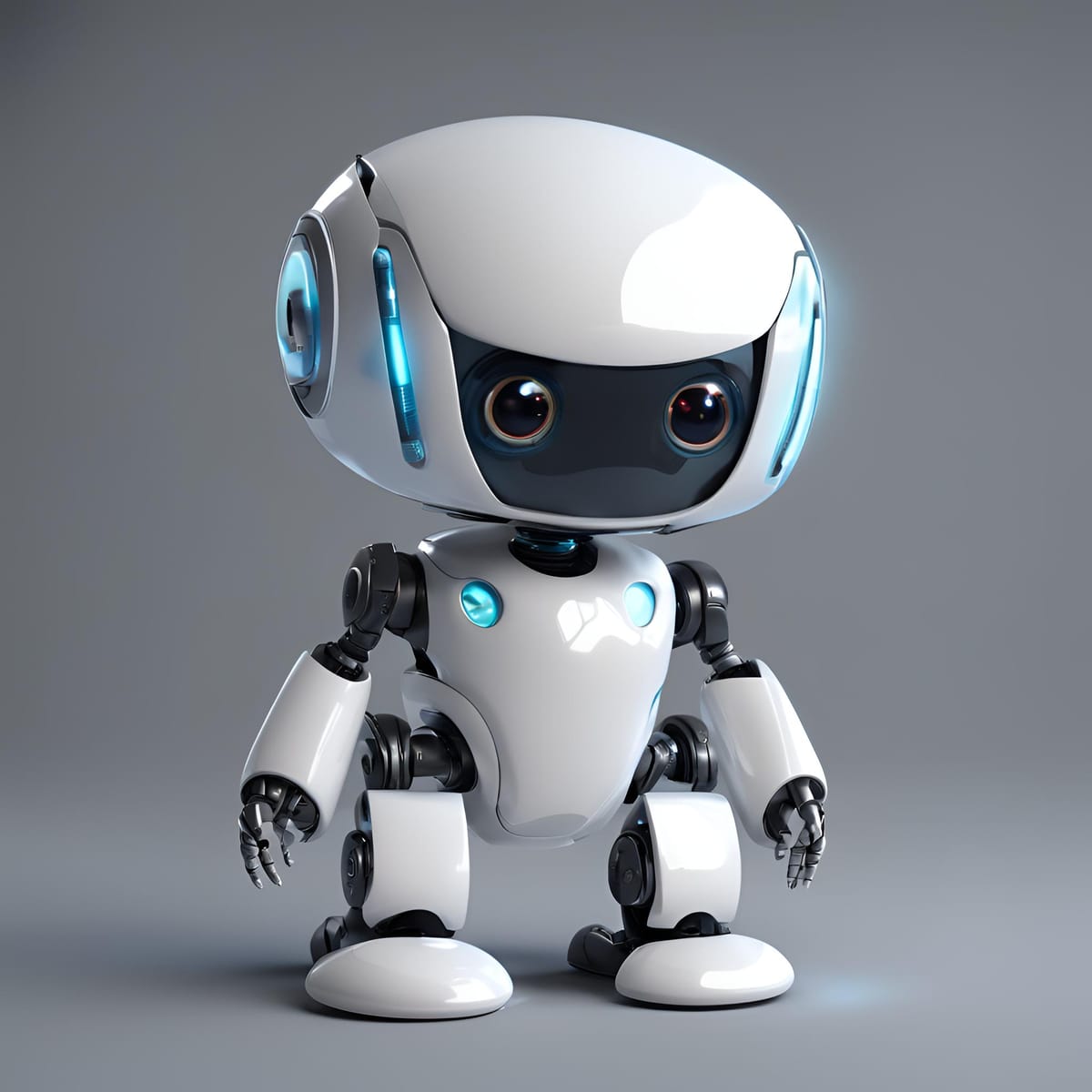Can AI Bots Really Replace Human Support?

Can AI truly replace the human touch? Let’s dive into this intriguing question by exploring the rise of AI in customer support, the battle between human touch and digital dexterity, the emotional intelligence of bots, and what the future holds.
AI: Robots in Customer Support
Imagine walking into a bustling coffee shop where baristas memorize your usual order and greet you with a smile. Now, picture a world where a chatbot does the same but from behind a digital screen. The rise of AI in customer support is akin to the revolution of self-service kiosks in fast-food chains; it’s about efficiency, speed, and convenience. At AI Chatbot Support, we witness this transformation daily as businesses leverage our technology to enhance their customer interactions.
The statistics are eye-opening. According to a report by Gartner, by 2023, over 80% of customer interactions will be handled without a human agent. This shift is largely driven by the benefits that AI offers: 24/7 availability, instant responses, and the ability to handle multiple queries simultaneously. Companies like ours are developing sophisticated AI chatbots that can provide not just basic answers, but also solve complex issues, ensuring a smooth and satisfactory customer experience.

But it’s not just about handling queries; it’s about doing so with finesse. AI-driven tools can analyze customer data to provide personalized responses, track past interactions, and predict future needs. This level of customization was once the domain of human agents, but now, AI is stepping in, and it’s doing so with remarkable precision. Businesses are saving costs while improving customer satisfaction, and the trend shows no signs of slowing down.
Yet, as AI continues to evolve, it’s crucial to remember that the goal isn’t to replace human agents entirely but to augment their capabilities. By handling repetitive tasks, AI allows human agents to focus on more complex and emotionally charged issues. This synergy between man and machine is where the real magic happens, creating a support system that’s both efficient and empathetic.
Human Touch vs. Digital Dexterity: Who Wins?
Picture this: You’re having a bad day, and your internet goes out. Frustrated, you contact customer support. Would you prefer talking to a compassionate human who listens to your woes, or an AI bot that provides a quick solution? This scenario encapsulates the ongoing debate between human touch and digital dexterity in customer support.
Human agents bring empathy, understanding, and a personal touch that machines struggle to replicate. They can read between the lines, sense frustration, and provide comfort. For many customers, this human interaction is invaluable, especially when dealing with sensitive or complex issues. At AI Chatbot Support, we understand that sometimes only a human can truly connect with another human.
On the other hand, AI bots excel in speed, efficiency, and consistency. They don’t get tired, don’t need breaks, and can handle an immense volume of queries simultaneously. For straightforward issues, AI can often provide a quicker resolution than a human agent. Moreover, AI can continuously learn from interactions, becoming smarter and more effective over time. This digital dexterity is a game-changer for businesses looking to optimize their support services.
So, who wins? The answer might be neither and both. It’s about leveraging the strengths of each. At AI Chatbot Support, we advocate for a hybrid model where AI handles routine queries, freeing human agents to tackle more complex issues. This approach not only enhances efficiency but also ensures that customers receive the empathy and understanding they sometimes need. It’s a win-win situation where technology and humanity coexist harmoniously, each playing to their strengths.

Smiling Screens: Can Bots Really Understand Us?
Imagine a world where your digital assistant not only understands your words but also senses your emotions. It’s a world where AI bots can discern a frown from a smile, and adjust their responses accordingly. Sounds like science fiction? At AI Chatbot Support, we’re turning this into reality, one interaction at a time.
Emotional intelligence is the holy grail for AI in customer support. Traditionally, bots have struggled with understanding context, tone, and sentiment. However, advances in natural language processing (NLP) and machine learning are changing the game. Modern AI chatbots are becoming adept at recognizing emotions through textual cues and responding in a more human-like manner. This is crucial because, as studies show, over 70% of customer experiences are based on how the customer feels they are being treated.
Take, for example, the story of Jane, a customer who was having trouble with her new smartphone. Frustrated, she reached out to customer support and was greeted by an AI bot. Initially skeptical, Jane was surprised when the bot not only understood her problem but also responded with empathy, offering solutions that finally resolved her issue. Jane’s experience highlights how far AI has come in understanding and responding to human emotions.
However, it’s important to note that while AI can mimic empathy, it doesn’t actually feel emotions. This can be a double-edged sword. On one hand, it means AI can provide consistent support without getting flustered. On the other hand, it can sometimes miss the nuances of human emotion that a live agent would catch. That’s why at AI Chatbot Support, we emphasize the importance of a balanced approach. Our AI chatbots are designed to handle a wide range of interactions, but we also ensure that human agents are available for more nuanced or emotionally charged issues.
The Future Is Here: Embracing AI in Support Services
Imagine walking into a future where customer support is not just a department but a seamless experience woven into every interaction you have with a brand. This future is not far off; in fact, it’s already here. At AI Chatbot Support, we’re pioneering this transformation, helping businesses integrate AI-driven support services across various platforms, including websites, social media, and messaging apps.
The future of customer support lies in omnichannel experiences. Customers expect to interact with brands seamlessly across different platforms, whether it’s through a website chatbot widget, social media, or business messaging apps like WhatsApp and Slack. AI chatbots are uniquely positioned to provide this level of integration, offering consistent support regardless of the platform. This not only enhances customer satisfaction but also streamlines operations for businesses.

The future of AI in customer support is about proactive engagement. Imagine receiving a timely reminder from your AI chatbot about an upcoming appointment or a suggestion for a product you might like based on your past purchases. This level of personalization is made possible through advanced analytics and machine learning, which can predict customer needs and act accordingly. It’s like having a personal assistant who knows you better than you know yourself.
At AI Chatbot Support, we’re excited about the endless possibilities that AI offers. From handling routine queries to providing personalized recommendations, AI is set to revolutionize customer support. But as we embrace this future, it’s essential to maintain a balance. Human agents will always have a role to play, especially when it comes to complex or emotionally charged issues. The key is to create a harmonious blend of AI and human support, ensuring that customers receive the best of both worlds.
As we stand on the brink of a new era in customer support, it’s clear that AI is not here to replace humans but to work alongside them. The rise of AI in customer support offers unparalleled efficiency and personalization, but it also highlights the irreplaceable value of human empathy and understanding. At AI Chatbot Support, we’re committed to leveraging the best of both worlds, creating a support system that’s not only efficient but also deeply human. So, can AI bots really replace human support? Perhaps the better question is: how can AI and humans work together to create the best customer support experience possible? The future is bright, and we’re excited to be part of this incredible journey.
FAQ
Q: What types of customer support can AI chatbots handle?
A: AI chatbots can handle a wide range of customer support tasks, including answering frequently asked questions, providing product information, troubleshooting common issues, and even processing orders. They are particularly effective for routine queries and can operate 24/7, providing instant support to customers.
Q: How do AI chatbots understand and respond to customer emotions?
A: Modern AI chatbots use advanced natural language processing (NLP) and machine learning algorithms to analyze textual cues and understand the context and sentiment of customer messages. This allows them to respond in a more human-like and empathetic manner. However, they do not actually feel emotions but can mimic empathetic responses based on the data they’ve been trained on.
Q: Can AI chatbots integrate with other platforms like social media and messaging apps?
A: Yes, AI chatbots can integrate seamlessly with various platforms, including social media (such as Facebook, Instagram, X – Twitter, Google Business Manager) and business messaging apps (like WhatsApp, Viber, Slack, WeChat). This enables businesses to provide consistent and efficient support across multiple channels, enhancing the overall customer experience.
Q: Will AI replace human customer support agents entirely?
A: No, the goal of AI is not to replace human agents but to augment their capabilities. AI chatbots can handle routine tasks, freeing human agents to focus on more complex and emotionally charged issues. This hybrid approach ensures efficiency while maintaining the human touch that many customers value.
Q: How does AI Chatbot Support ensure the quality of its AI-driven customer support?
A: At AI Chatbot Support, we use advanced AI algorithms and continuous learning techniques to improve the performance of our chatbots. We also monitor interactions to ensure high-quality responses and provide training for human agents to




